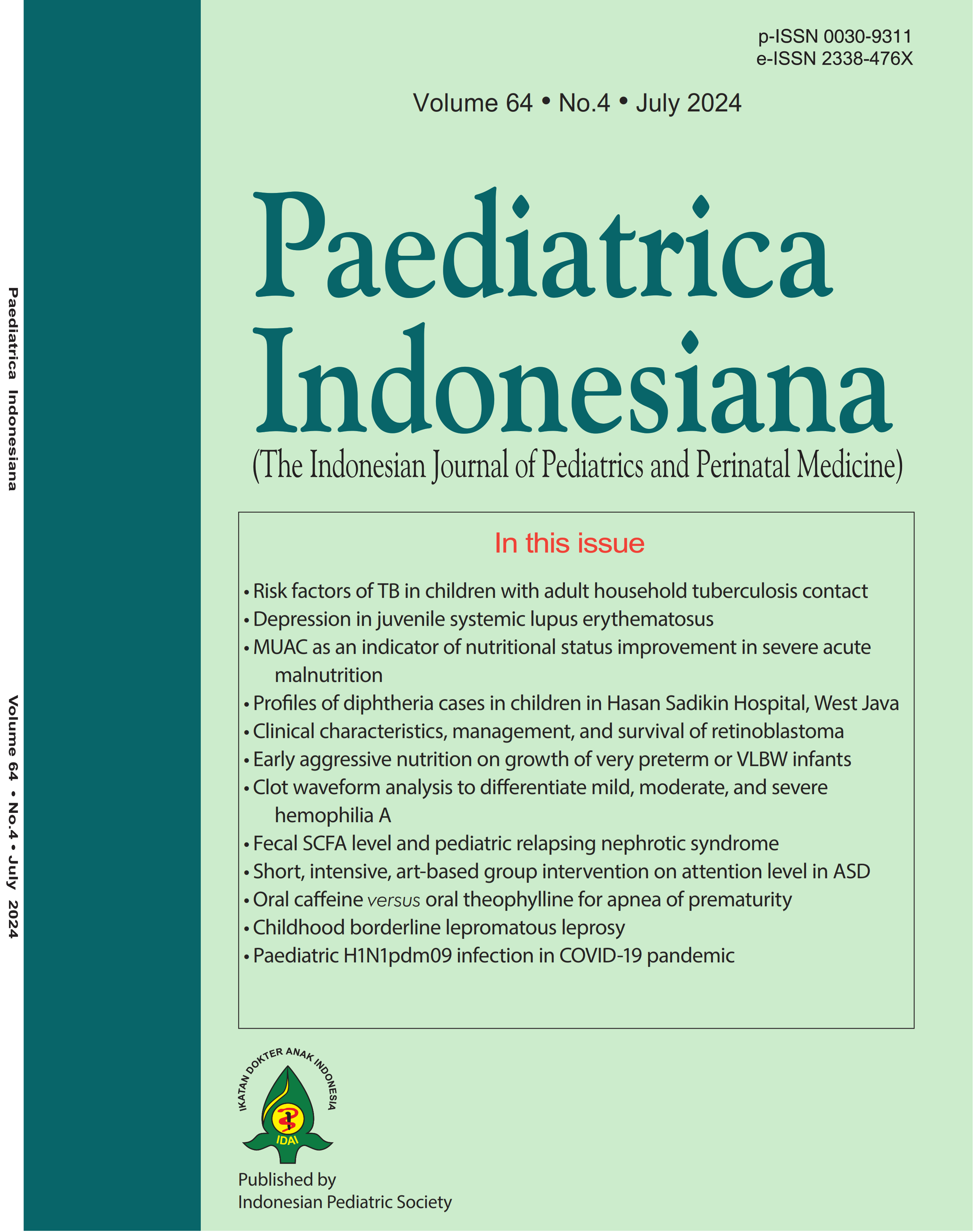Clot waveform analysis to differentiate mild, moderate, and severe hemophilia A
Abstract
Background Clot waveform analysis can be used to evaluate clot formation profiles. This waveform can be obtained from activated partial thromboplastin time (APTT) assays without additional reagents and shows different patterns in hemophilia patients with coagulation factor VIII (F VIII) deficiency or abnormality.
Objective To determine the clot wave pattern and its process in clot formation phases (pre-coagulation, coagulation, and post-coagulation) in normal and hemophilia A subjects, analyze for possible correlations between clot wave parameters and F VIII activity, and obtain the pattern of coagulation curves in hemophilia subjects as a step to assess clot waveform analysis as a possible screening tool for hemophilia.
Methods In this cross-sectional study, we performed clot wave analysis in 145 adult and pediatric subjects with hemophilia to obtain the clot wave pattern in this condition. Clot wave analysis was also done in 160 subjects with normal hemostasis to obtain reference clot wave parameters.
Results In this study, the starting point of coagulation phase in normal subjects was between 30-40 seconds, with a shorter pre-coagulation phase and steeper slope. Hemophilia patients had a longer pre-coagulation phase and flatter slope, especially in severe hemophilia A patients, who had longer and more variable coagulation starting points (P<0.001). The absolute values of maximum coagulation velocity (Min1), maximum coagulation acceleration (Min2), and maximum coagulation deceleration (Max2) of hemophilia A patients were also lower than those of normal hemostasis patients, with lower absolute value seen in severe than in mild-moderate hemophilia A patients. A moderate correlation was found between Min1, Min2, and Max2 with F VIII activity (P<0.001).
Conclusion Clot wave analysis may be considered as a method for screening hemophilia patients to distinguish mild-moderate and severe hemophilia A patients in health facilities that lack the ability to perform F VIII assays.
References
2. World Federation of Hemophilia. Guidelines for the management of hemophilia. 2nd ed. Canada: Blackwell; 2012.
3. Hematology Clinic, Cipto Mangunkusumo Hospital, Jakarta. Hemophilia Registry Report. [unpublished data]. Jakarta; 2019.
4. Pusat Data dan Informasi Kementerian Kesehatan Republik Indonesia. Building a family of support. 2015. [cited 2019 July 24]. Available from: http://www.pusdatin.kemkes.go.id.
5. Sima M. Clot waveform analysis and its clinical applications. Japan: Sysmex Corporation; 2015.
6. Shima M, Thachil J, Nair SC, Srivastava A. Towards standardization of clot waveform analysis and recommendations for its clinical applications. J Thromb Haemost. 2013;11:1417-20. DOI: https://doi.org/10.1111/jth.12287
7. Katayama H, Matsumoto T, Wada H, Fujimoto N, Toyoda J, Abe Y, et al. An evaluation of hemostatic abnormalities in patients with hemophilia according to the activated partial thromboplastin time waveform. Clin Appl Thromb Hemost. 2018;24:1170-6. DOI: https://doi.org/10.1177/1076029618757344
8. Nogami K, Matsumoto T, Tabuchi Y, Soeda T, Arai N, Kitazawa T, et al. Modified clot waveform analysis to measure plasma coagulation potential in the presence of the anti-factor IXa/factor X bispecific antibody emicizumab. J Throm Haemost. 2018;16:1078-88. DOI: https://doi.org/10.1111/jth.14022
9. World Federation Of Hemophilia Report On The Annual Global Survey 2017. Canada: World Federation of Hemophilia. 2018 [cited 2021 December 20]; Available from: https://www1.wfh.org/publications/files/pdf-1714.pdf
10. Yoo KY, Jung SY, Hwang SH, Lee SM, Park JH, Nam HJ. Global hemostatic assay of different target procoagulant activities of factor VIII and factor IX. Blood Res. 2018;53:41-8. DOI: https://doi.org/10.5045/br.2018.53.1.41
11. Giangrand P. Acquired hemophilia. Revised ed. Canada: World Federation of Hemophilia; 2012. p.1-9.
12. Arslan FD, Serdar M, Ari EM, Oztan MO, Kozcu SH, Tarhan H, et al. Determination of age-dependent reference ranges for coagulation test performed using Destiny Plus. Iran J Pediatr. 2016;26;e6177. DOI: https://doi.org/10.5812/ijp.6177
13. Sevenet PO, Depasse F. Clot waveform analysis: Where do we stand in 2017?. Int J Lab Hematol. 2017;39:561–8. DOI: https://doi.org/10.1111/ijlh.12724
14. Matsumoto T, Nogami K, Tabuchi Y, Yada K, Ogiwara K, Kurono N, et al. Clot waveform analysis using CS-2000iTM distinguishes between very low and absent levels of factor VIII activity in patients with severe haemophilia A. Haemophilia. 2017;23:e427-35. DOI: https://doi.org/10.1111/hae.13266
15. Shima M, Matsumoto T, Fukuda K, Kubota Y, Tanaka I, Nishiya K, et al. The utility of activated partial thromboplastin time (aPTT) clot waveform analysis in the investigation of hemophilia A patients with very low levels of factor VIII activity (FVIII:C). Thromb Haemost. 2002;87:436–41. DOI: https://doi.org/10.1055/s-0037-1613023
Copyright (c) 2024 Ina Susianti Timan, Novie Amelia Chozie, Novianti Santoso

This work is licensed under a Creative Commons Attribution-NonCommercial-ShareAlike 4.0 International License.
Authors who publish with this journal agree to the following terms:
Authors retain copyright and grant the journal right of first publication with the work simultaneously licensed under a Creative Commons Attribution License that allows others to share the work with an acknowledgement of the work's authorship and initial publication in this journal.
Authors are able to enter into separate, additional contractual arrangements for the non-exclusive distribution of the journal's published version of the work (e.g., post it to an institutional repository or publish it in a book), with an acknowledgement of its initial publication in this journal.
Accepted 2024-09-02
Published 2024-09-02













